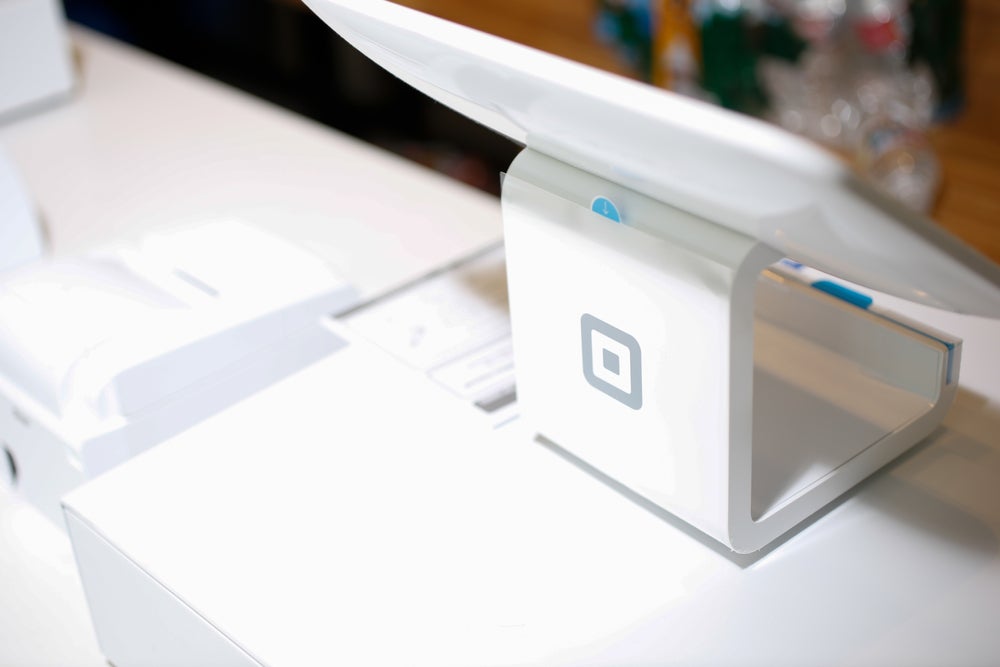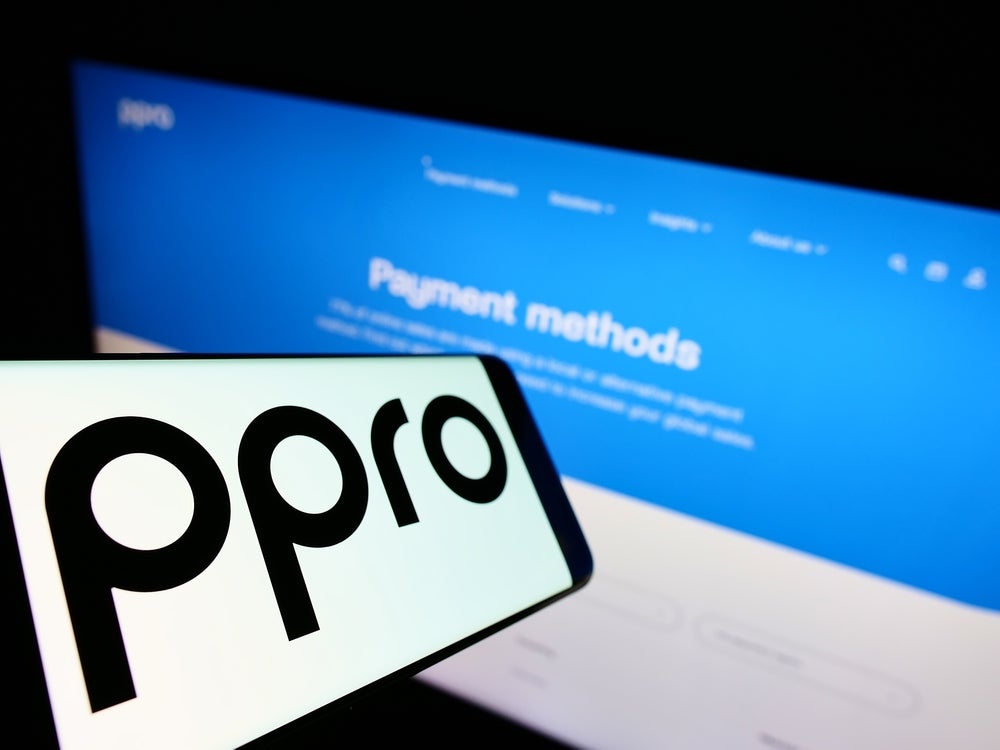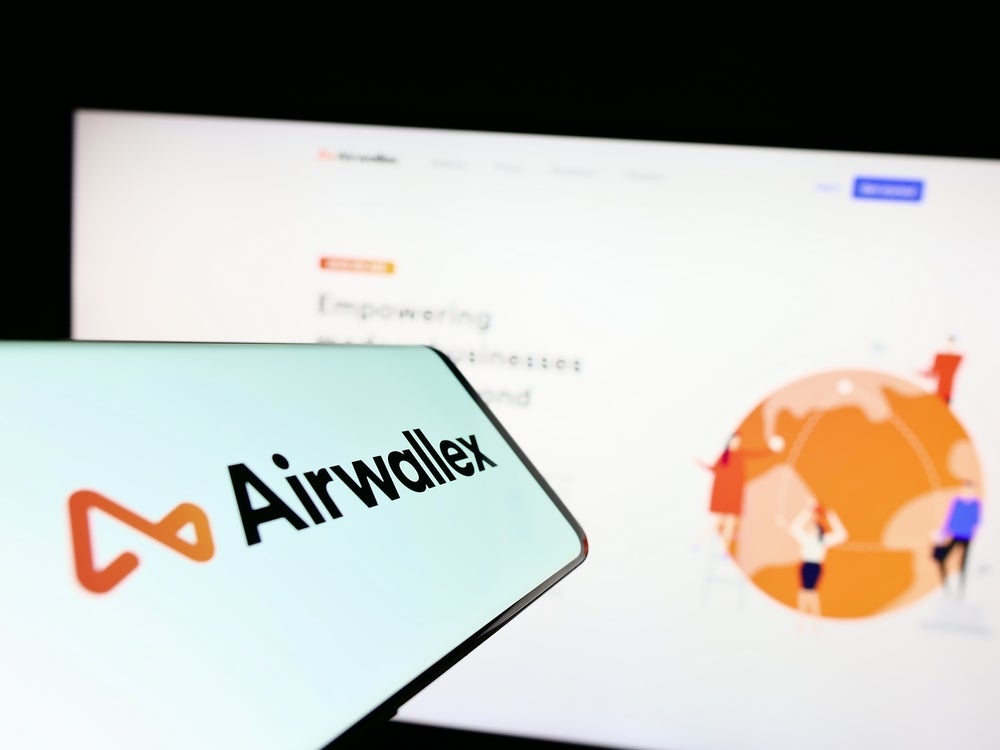Financial institution brands have been known to lack social media foresight for a number of reasons such as regulatory concerns and unimaginative marketing. Franchesca Hashemi examines a report delivered by Innovalue and Locke Lord on how to engage effectively in the rapidly growing environment of digital consumption
Financial institutions (FIs) and social media have a challenging relationship: it is not a natural marriage, to say the least.
Research by consultancy firm Innovalue and Locke Lorde, a strategic management and advisory firm rooted in finance and international law firm respectively, list key areas where significant gains can be made:
"Talent recruitment, employee and consumer engagement and empowerment, market intelligence and product design, credit scoring, analytics, awareness, marketing".
The report entitled ‘Financial Services and Social Media’ includes a wealth of solutions, including customer-centricity, brand culture and social responsibility to help financial providers build a loyal online following. However, unfortunately for the sector, there are not many fast track solutions. The organic approach, from the bottom up, comes highly recommended.
The Future’s in the Past
Presently there are more than one billion active Facebook users around the world, and this figure is steadily increasing. There is undeniable scope for banks, challengers and fintech developers to integrate themselves into the online community.
Facebook is worth $245bn, according to FB Tech 30, since its launch in the US in 2004.
How well do you really know your competitors?
Access the most comprehensive Company Profiles on the market, powered by GlobalData. Save hours of research. Gain competitive edge.

Thank you!
Your download email will arrive shortly
Not ready to buy yet? Download a free sample
We are confident about the unique quality of our Company Profiles. However, we want you to make the most beneficial decision for your business, so we offer a free sample that you can download by submitting the below form
By GlobalDataInnovalue’s research shows almost 2.1 billion people are now engaged in social networking, with approximately one billion people registered to a Youtube account. A further 28% of time spent online is on social media, of which more than half is on Facebook, according to wearesocial.net.
Yet as social media and banking analysts, The Financial Brand, state on its website:
"As social media marketing continues to gain steam in retail banking, financial marketers need to pause and think about how they use social channels and whether this activity is really adding any value."
The report advises businesses to think carefully about the platforms they choose.
For instance, there are 100 hours of video uploaded to YouTube every minute, Innovalue’s research found -and YouTube has had a profound impact on advertising and culture.
Photographs and moving images are fundamental to user engagement on social media. Mobile app Vine, a short-form video service that plays clips of footage which its users produce on six second loops, garners one billion hits per month. Interlink Vine with Twitter and you’ll find that 12 million Vine videos are posted every month, according to a New York Times blog from 2013.
Elsewhere, Instagram and Twitter, whose respective defining features are breaking news and alluring pictures, provide financial services with an unorthodox platform to post all sorts of content.
The Financial Brand advises: "Instead of boring readers with posts exclusively about your bank’s hours, rates, or services, try to entertain them.
"Post content that people respond positively to and in varied forms- text, photos, video. Use a casual, conversational tone."
In order to do this however, Innovalue reasons that operational challenges preceding "real time interaction", paramount to credibility, come into play:
"Communications that are typically routed through marketing and legal departments for time-taking reviews and approval….require banks to rethink their processes and roles…"
In 2013, Instagram – or "Insta" as its largest demographic say – hit 150 million monthly users, according to its own figures. Today, in 2015, current statistics stand at 300 million users, with 75 million using it daily.
According to analytics firm Twopchart, there are 974 million Twitter accounts as of September 2014. The figure rivals Facebook. However, research published by American radio and TV corporation CBS explain that only 25% of Twitter’s near billion users have an active presence (activity defined as sending a Tweet every 30 days). Yet this coffee shop in the sky – as Times journalist and glorified Tweeter Caitlin Moran calls it – proves popular because its users acquire verified information on global events, or what’s ‘trending’, as opposed to communicating.
Furthermore, the evolution of social media has created a powerful relationship between business, employee and audience. Customers can ask brands direct questions and get immediate answers, enabling the customer to solve a problem with minimal hassle.
This connects convenience to excellent customer service, which are mainstays of marketing. The task now is to transfer existing business acumen to an online platform, while showing a vocational personality that focuses less on "strategy", as Innovalue states.
"Possibilities have to be considered within the cultural context each FI operates in, accommodating consumer preferences, as well as regulation and compliance."

Financial Services Brands on Social Media
Just over 1% of Facebook’s users ‘Like’ the card payment brand Visa however nearly double this number ‘Like’ Redbull, according to Innovalue’s figures. Similarly, Starbucks’ updates adorn just under 3% of Facebook user’s timeline, with huge graphic images of colourful Frappuccinos and seasonal hot drinks enticing users to ‘share’ the post, ‘comment’ on it and ultimately buy the product.
Are FIs able to drive the same amount of traffic as an energy drink company?
Innnovalue warns the sector risks "lagging behind" its commercial peers. However, it should be noted that Red Bull boasts a string of sponsorship deals which maximises its online popularity.
The irrefutably "cool" Red Bull Music Academy brings together established and new alternative musicians and has more than 244,000 Facebook likes. ‘Red Bull’ as the umbrella company draws in 43 million. Within this arm, Red Bull TV, racing, adventure, games, hiking, and sky-diving exist.
Collaboration and association work well in the world of social media. On Facebook, Innovalue’s research shows approximately 0.03% of the Twitter population follow Red Bull’s Twitter account, which is more than Visa, American Express, Bank of America and the insurer State Farm.
It illustrates the importance of commercial popularity, which is prerequisite of successful online campaigns and financial services have suffered very bad press. Social media users, with the most avid aged 18-29, follow brands like Red Bull, Starbucks, Nike and H&M because they literally buy into the brand. Slick, feel-good advertising campaigns, with an interactive edge, satisfy a culturally hungry generation.
In Other News
Pew Research Centre found that 72% of online adults use video-based websites, such as YouTube, Vine and Vimeo. This figure is more than double the number recorded between 2006 and 2013.
Picking up on the cross-functionality of video, Lloyds Bank celebrated its 250th anniversary with an advert which found resounding praise in the Twittersphere.
- "#lloyds what’s the name of the song in Lloyds bank ad? Goose bumps every time I hear it!"
- "From the #Lloyds ad! Beautiful tune. I just used #Shazam to discover Wings Acoustic [soundtrack] by Birdy"
The second Tweet has even incorporated another social media app. It is a good example of what Innovalue terms "consumer service/engagement" as well as "product awareness, marketing and promotion". Lloyds gained traction in print and digital media by focusing the celebration on the customer.
Innovalue references MasterCard’s "imaginative" social media competitions. In 2012, MasterCard co-sponsored the Brit Awards, using the #priceless hashtag to offer fans the chance to duet with their favourite pop-star. Competitions are alluring. It gives millennials and low-earners reason to click a brand’s Facebook page, maybe winning a month’s supply of Nutella or pair of Nikes.
The report states:"The advantages of social media over traditional communication channels include its universal reach, its ‘non-corporate’ atmosphere and speed of discussion." If FIs want to garner more social media shares and likes, it may be a question of investing in trendy social media managers, to "empower" employee, brand and company.
As well as this, light subject matters will rejuvenate a financial brand’s online reputation. Jason DeMers of Forbes Magazine calls this the "humanisation element".
‘The Social Media Opportunity’
According to Innovalue’s report, there are nine strategic categories FIs already deploy. The first two (recruitment and employee engagement) should work cohesively for optimum productivity, the report discloses. This works both practically and empirically, as advertising job openings through the brand’s social media account is a positive conversation starter for the online community.
It allows vast amounts of skilled and technologically savvy people to view the job opening. This increases brand awareness while ’empowering’ recruiters and existing employees, who may choose to share the recruitment link on their personal account
The go-to business community is LinkedIn, which is designed for professionals. Its figures state the site networks more than 264 million customers across 200 countries, including 39 million students or graduates.
It should be kept in mind however that "social recruitment" can be applied in any capacity the financial brand sees fit.
LinkedIn, Facebook and Google Plus allow employees to discern specific information about potential recruits, as well as providing an analytical space to conduct research.
Innovalue lists opportunities surrounding "credit-scoring, fraud prevention and analytics" that help financial services make good choices. According to the report, payday loan provider LendUp checks the Twitter footprint of potential clients for "economic stability".
There are a number of tools referenced by Innovalue that help the social media checking process: microfinance, research on behavioural consumption and social media data.
Kreditch Digital Lending, a Hamburg based online creditor, ousted traditional credit checks. Instead, it developed a unique software analysis system, using big data from Amazon and eBay. This created a matrix to check credit scores, enhancing the lender’s innovation technique.
However, this type of analysis is open to much scrutiny in the mainstream. It brings back the age-old transparency debate, which is a vital core value of any business.
Product Awareness and Marketing
Producing and distributing marketing messages on social media can generate user engagement while encouraging new audiences to join in. However, customisation and insightful posts, which take into account the social platform you are posting, are key to influencing relationships.
Within Innovalue’s report, it describes Fidor Bank as "implementing headline-grabbing [social media] initiatives by incentivising its audience to "Like" the bank’s page. The bank also sets its current account interest rate according to the number of likes its Facebook page receives in a year." This approach will not suit legacy or well-established financial structures, however, as Innovalue states:
"Increasing connections provide Fidor with a stream of prospects as well as engagement that lowers the cost of acquisition to an average of $20 per customer, compared with $1,500 for the average US bank."
Fidor has successfully investigated the potential Facebook brings to an FI. The German bank also utilises aspects of Innovalue’s remaining five ‘strategic applications’: "Consumer engagement/ loyalty building, customer service/consumer education/, public relationship and social responsibility, and payment initative."
Research by UK-based Kantar Media TGI from the first quarter of 2014 found that social media users are more likely to embrace financial innovation technologies.
The same study found that people who log onto a social media platform at least twice a day are 22% more likely than an average consumer to stay abreast of new technologies, and 22% more likely to use NFC payments. Financial brands such as American Express, French company S-Money and American-based web payment developer Stripe, have teamed up with Twitter, Google and Facebook and introduced E-commerce services.
It should be stated however that payment services must be authorised in the EU, and as Innovalue states: "the reporting and capital requirements accompanying such authorisation form a very high bar for organisations to enter."

Regulation, Security and Constraints
Data concerns and security are major issues for financial services and social media. There is a slew of regulation that keeps in check British institutions as well as their global arms.
From the Financial Services and Markets Act 2000 (FMSA), which states a company’s online presence can be held accountable to the Data Protection Act (DPA) to the FCA (Financial Conduct Authority) and ASA (Advertising Standards Agency), digital marketers must ensure that rules which apply on paper are applied accordingly online.
Pew Research Centre found that 86% of internet users have at some stage attempted to hide their online footprints: "from clearing cookies and encrypting their email to avoiding using their name to using virtual networks that mask their internet protocol (IP) address. Recently, American regulator FFIEC released guidelines governing social media use by FIs domestically and abroad.
According to Innovalue, the FFIEC proposed: "financial institutions must have a formal written social media strategy that is aligned with the global goals and objectives of the organisation."
Innovalue also stresses that customer "culture" must be taken into account, as this helps the brand see through media hype and adhere to legal challenges.
Data
Protecting customer data is tantamount to the image of financial institutions. Yet the very nature of social media, its openness and instant conversations, means that negative interactions will happen.
Complaints directed at the institution should not be covered up by a social media manager. Leaving negative user comments on a business page, as long as there is a helpful reply below, show good will and keen interest in maintaining healthy customer relations.
It is almost impossible to hide or delete bad press on social media. Attempting to do so could do more harm than good.
Yet Innovalue reports that "uncontrolled and unaddressed complaints" are difficult to moderate or control. This is factually true, however, allowing bad press, as long as it doesn’t infringe anyone’s rights, conveys commitment to customer satisfaction.
A survey carried out by Forrester showed that 8% of US social networkers, who interact with financial firms, do so primarily to "post reviews, complaints and questions" while 15% preferred to be "alerted to promotions and special offers". The contrast proves that it isn’t all doom and gloom for the sector. However, Innovalue concedes:
"While many commentators still claim that the power of social media will have a significant impact on the way financial services conduct business and on people’s perception of FIs, it is unlikely that there will be widespread convergence, beyond nice topical areas or beyond single organisations that are managing to set themselves up as a social media best practice, between social media and financial services in the foreseeable future."
In the UK, only 9% of Forrester’s respondents agreed that communication with banks via social media is central. Contrastingly, 25% of respondents in Hong Kong consider their banks giving personalised advice via social media a priority.
Wells Fargo challenges the undertone of this sentiment with its online persona, which includes 733,000 Facebook likes, Twitter and LinkedIn accounts, a YouTube channel with 2.6 million views, seven active education-based blogs and a unique online community developed by the brand Stagecoach Island.
Innovalue sums up the survey: "The vast majority of people do not consider engaging or sharing information with banks via social media channels a priority, mainly suggesting concerns around security."
However, the report cites the financial crisis and well-publicised scandals as reasons why customers are disinterested in pursuing social media relationships with them:
"Consumers lost their trust in financial institutions; social media can give financial providers new means of engaging with consumers in an appealing manner that can help restore lost confidence."
Clear objectives, a team of natural Facebookers, Tweeters and image distributors are necessary components of social media success. Competition from luxury, entertainment and commercial brands – let alone customer’s real social media friends – is tough. FIs must first establish their perimeters.
Further advice includes questions that financial services should ask:
- To what extent should they involve themselves in social media?
- What regulator, security and privacy dangers are involved?
- Do they have prerequisite capabilities? If not, are they willing to make the sustained investment to acquire them?
- What level of autonomy do social media employees have?
People will continue to use social media as long as it exists. Therefore if a financial brand wants to remain relevant to consumers, it must sign up to social media.
At least for appearance’s sake.







